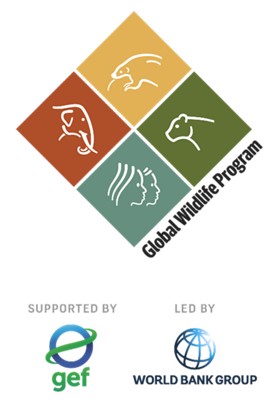Effective community engagement is essential for the success and sustainability of conservation projects. In practice, there are many different interpretations of what constitutes true community empowerment and participation, which can occur at different levels and with varying forms of impact.
This workshop used a five-step process as a guiding framework to increase awareness for how to ethically and productively engage local communities. This framework would then be used in the successful design and implementation of wildlife conservation projects.
- OVERVIEW
- AGENDA
- RESOURCES
- RELATED
The World Bank, through the GEF-funded Global Wildlife Program (GWP), collaborated with TRAFFIC to host the fourth in a series of virtual technical knowledge exchanges on behavior change. The goal of the series is to support GWP countries as they integrate behavior change more effectively into their projects. This workshop brought together 34 participants from 14 GWP countries.
Participants were given the opportunity to interact with experts in the field and gained insights from those who have worked with local communities. The discussions focused on challenges, lessons learned, and successful adaptations.
Workshop Summary
The workshop featured presentations from three guest speakers, each highlighting various aspects and case studies of local community engagement from around the world. The case studies referred to a five-step framework which includes (i.) identifying stakeholders and local needs, (ii.) setting project goals and stakeholder roles, (iii.) co-designing solutions, (iv.) implementing solutions collectively, (v.) evaluating and adapting.
Key takeaways from the case studies include:
In Malaysia, the Rainforest Conservation project identified and mapped the stakeholders, built trust early-on, explored the social and cultural elements that needed to be incorporated in the project design, and co-created solutions on livelihoods development and job creation. Regular workshops and open communication with communities helped them play an active role in implementing solutions. Communities started supporting biodiversity monitoring and also took over some operational tasks with the project. This helped community members build skills and enabled them to take ownership of the project. A focus on women and vulnerable groups ensured an inclusive approach to community engagement.
In South Africa, through the help of awareness campaigns targeting youth and landowners and in partnership with private landowners, the Northern Cape’s Department of Agriculture scaled up a project to prevent poaching of succulent plants. The project promoted conservation stewardship agreements, improved enforcement, and provided training to officers and prosecutors. There have been challenges related to private landowners being hesitant to enter into long-term agreements, but through partnerships, the project is trying to address the concerns.
In Valle del Cauca, Colombia, long-term advocacy for community engagement at all stages of decision-making has been a key priority. It is part of driving sustainable behavior change and protecting more than 225 areas through participatory processes focused on environmental education, community involvement, and communication for development. This approach has strengthened environmental governance, fostered community ownership of natural resources and the environment and advanced gender equity. Action plans are designed every four years with a strong emphasis on collaboration with communities and indigenous groups, alongside local governments, businesses, and others. This helps ensure projects align with the social, economic, and environmental needs of the territory. The success of environmental management relies on respectful, collaborative, and concerted efforts with communities, strengthening governance and significantly improving conservation.
The workshop also included three breakout groups to discuss challenges, best practices and recommendations. The event offered an opportunity to explore areas where support could help projects aiming to incorporate community engagement.
Welcome
Introduction to behaviorally informed approaches to community engagement
Expert presentations and case studies:
- Itala Yepez: “FPIC as a Tool in Community Engagement: Case Study of the Kuamut Forest” Conservation Project in Malaysia
- Tebogo Mawela: “Conservation Through Collaboration: Empowering Communities to Lead: A Perspective from South Africa”
- Gloria Suarez: “Participatory engagement: Transforming Landscapes in Colombia”
Q&A
Breakout groups activity
Closing
GWP E-library: Behavior Change for Wildlife Conservation
Presentation: Behaviorally informed approaches to community engagement in conservation projects | French | Spanish

Date: December 13, 2024
Time: 07:30 AM - 07:30 AM ET
Location: Online
